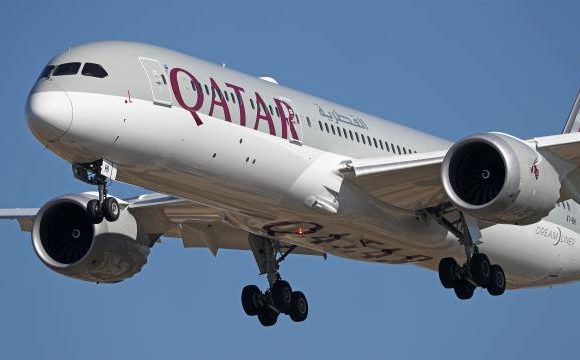
Twelve individuals were injured due to turbulence on a flight from Doha to Dublin, according to Dublin Airport operator DAA. The Boeing 787-9 Dreamliner encountered turbulence while flying over Turkey. Upon landing around 13:00 local time, Qatar Airways flight QR017 was met by emergency services, including airport police, ambulance, and fire officers. Six passengers and six crew members reported injuries, with eight being taken to the hospital.
Ireland’s National Ambulance Service had received a pre-alert and was present to assist with the disembarkment. Dublin Fire Brigade staff and emergency vehicles also attended. A DAA spokesperson mentioned that the Dublin Airport team continues to provide full assistance to passengers and airline staff on the ground.
Passengers described the incident as frightening. Cathal, a passenger traveling home to Ireland from Doha, told RTÉ that the seatbelt signs were off during the incident, causing his dinner to spill. Another passenger, Paul Mocc, saw people hitting the roof of the aircraft and noticed injured crew members, some limping and bandaged, continuing to serve passengers. He also observed a passenger on oxygen with suspected back injuries lying across several seats.
Emma Rose Power and Conor Buckley, returning to Dublin from Thailand, experienced the turbulence while Mr. Buckley saw a flight attendant lifted into the air. Ms. Power was asleep during the turbulence but saw panic on everyone’s faces when she woke up. She noted that some flight attendants had scratches and one had an arm in a sling.
Another passenger, Eileen, described it as the “worst experience” she ever had on a plane, with her partner Tony holding her down as she had not been wearing her seatbelt and was asleep during the turbulence. Eileen expressed reluctance to fly again soon.
Qatar Airways stated that a small number of passengers and crew sustained minor injuries and were receiving medical attention, with the incident under internal investigation. The overall operations at Dublin Airport were unaffected, and the return flight to Doha was scheduled to operate with a delay.
This incident follows another severe turbulence event earlier in the week on a Singapore-bound flight, which resulted in the death of a 73-year-old British man and over 100 injuries, 20 of which are critical with spinal injuries. Singapore Airlines CEO Goh Choon Phong issued an apology and Singapore’s government has promised a thorough investigation.
Picture Courtesy: Google/images are subject to copyright

